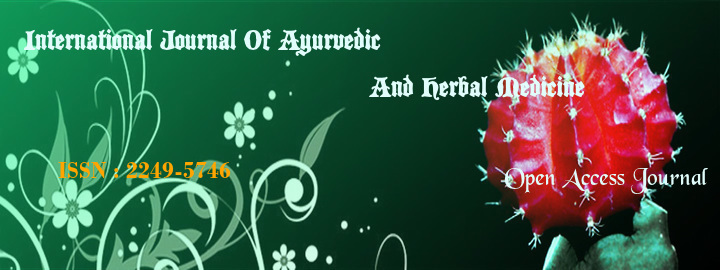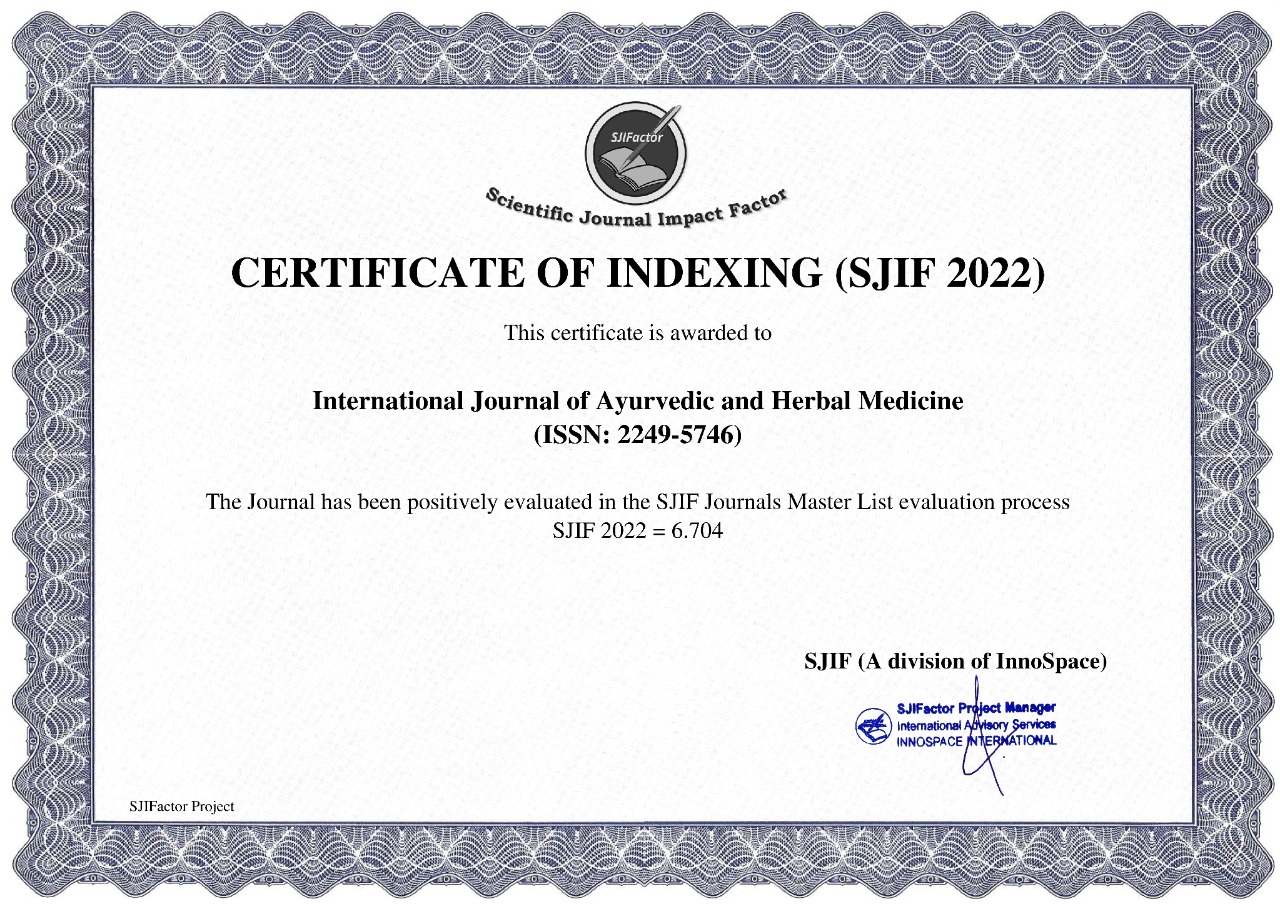


1Ashima K. Sasidharan ,2Dr.P.Y Ansari
DOI : http://dx.doi.org/10.18535/ijahm/v7i4.15
1 PG Scholar, Department of Dravyagunavijnanam, Government Ayurveda College, Tripunithura, Ernakulam , Kerala,India
2 Professor and HOD, Department of Dravyagunavijnanam, Government Ayurveda College, Tripunithura, Ernakulam, Kerala,India
ABSTRACT:
The genus Sida L., belonging to family Malvaceae is a therapeutically important genus. The different species of which are widely used in traditional systems of medicine throughout India. This genus is of great importance in the Indian traditional system of medicine and this is perhaps the most widely used raw drug in the production of different Ayurvedic formulations in the name Bala. Northern authors consider Bala as Sida cordifolia Linn, but in Kerala,particular variety Sida alnifolia Linn. is taken as Kurunthotti and used under the label of Bala. It is commonly used as the drug Bala by both the traditional and Ayurvedic practitioners of Kerala. This particular variety is mentioned in Hortus Malabaricus, the text book which deals with the medicinal plants of Kerala. Importantly the drug Bala is not mentioned in Ayurvedic pharmacopeia of India; still it is a widely used drug for many preparations of Ayurveda. Since it is used as Bala in Kerala, the references available for its identification are a few, the taxonomy and histological parameters including powder microscopy of the root presented in this paper may be proposed as parameters to identify and establish the authenticity of root of Sida alnifoia Linn.
KEYWORDS: Bala, histological parameters, Kurunthotti, Sida alnifolia Linn, taxonomy, powder microscopy.
Reference:
1. Sivarajan VV, Pradeep KA, Malvaceae of Southern Peninsular India: A taxonomic monograph Daya Publishing House, New Delhi. 1996
2. Manilal K S. Hortus Malabaricus- Volume 8. Thiruvananthapuram: Kerala University; 2008.
3. Sasidharan N, Muraleedharan PK. The Raw Drug Requirement of Ayurvedic Medicine Manufacturing Industry in Kerala. Peechi, Thrissur: Kerala Forest Research Institute; 2009.
4. M. Navas et al. / Pharmacognosy Journal 5 (2013) 269e274.
index























